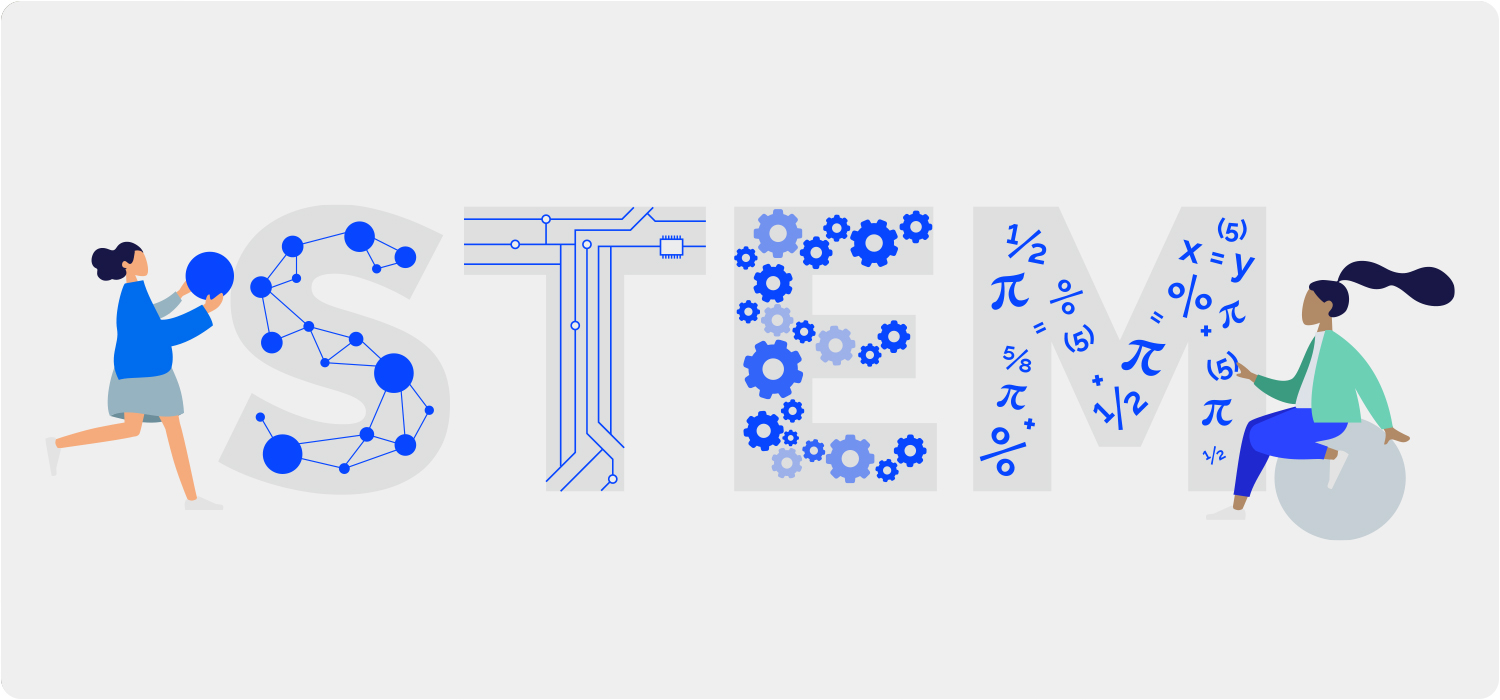THIS IS WHY WE NEED WOMEN IN STEM

Women in STEM are more than just a quota or half the population; they’re meticulous and have something to contribute.
It’s clear: STEM jobs (science, technology, engineering, and mathematics) are growing in importance and in popularity every year and aren’t looking to stop. What’s less clear is how women are still lagging behind in the field, even though efforts are made to promote diversity and inclusion. There’s a huge surplus in STEM jobs, with too little people, especially women, to fill them.
So what could be selling points to get more to join up?
What are some role models to look up to?
Need some reasons to convince your female friends to join in on a STEM career? Read on!

REASONS TO CONSIDER A STEM CAREER
“It’s thanks to STEM professionals that the internet exists and that we understand our world better.”
Woman or not, picking up a STEM career path has definite advantages worth considering. These top 5 reasons to pick a STEM career in particular could be alluring to fence-sitting women contemplating their options:
-
Increased job security: While routine jobs are at risks of being robotized, STEM jobs are relatively safe. STEM graduates are usually more adaptive to the changing job requirements, and are more likely to fit the new jobs that are created. While no job is 100% secure, both male and female students graduating with STEM degrees are nearly all immediately employed.
-
More pay: nearly 50% of people with a bachelor’s degree in a STEM field make more money than people with a PhD in other areas. In the Netherlands, the average salary of a biomedical engineer is €66k, a data analyst €77k, and a mathematician €92k.
-
High-tech environment: you live your day to day live on the cutting edge. Whether aerospace engineer, software developer or math teacher, it’s all about looking ahead. It’s thanks to STEM professionals that the internet exists and that we understand our world better.
-
Transferable skills: at its core, STEM jobs all share a drive to solve problems, and the skills needed to make it happen. In STEM, it’s all about collaboration, logic, and analytics. Overall, technical skills are needed, while curiosity, independency and creativity are also nurtured.
-
Market gap: jobs are available, and more are constantly added. That also means less competition. Every year, nearly 3 million jobs in STEM fields go unfilled because no one is qualified to fill them.
Are you part of an organization looking to hire a more diverse task force in a STEM field? Look no further. On Vorsers, we connect analytical masterminds, men and women, from across the globe to one platform.

FEMALE STEM ROLE MODELS TO LOOK UP TO
“In the past, many women leaders in STEM fields unfortunately hid, either voluntarily or not, behind male co-workers.”

Beyond practical reasons to join up, there’s a lot of female role models to look up to. In the past, many women leaders in STEM fields unfortunately hid, either voluntarily or not, behind male co-workers. Others got overshadowed by men in their field and were not taken seriously.
You may have heard of Marie Curie, but there are plenty more worth mentioning. Looking for a few examples of female role models you can share in your organization? Here are 8 of the most ground- breaking women in STEM that made a difference in their field:
Science: discovering & visualizing information like no other
- Florence Nightingale: Statistician and nurse, she helped advance medical knowledge by developing statistical graphics to visualize data called coxcombs. Her creation helped illustrate various causes of death during the Crimean War. In recent times, her approach is being used to visualize COVID-19 cases.
- Marie Curie: Physicist and chemist whose radioactivity research propelled nuclear science. This helped lay the foundation for X-rays and radiotherapy to treat cancer, to name a few. She was also the first woman to earn the Nobel Prize.
Technology: IT, computers, games, and all things in-between
Ada Lovelace: Thought to have written the first computer algorithm by recognizing computers could do more than pure calculation. Many see her as the first computer programmer.
Nicole Eagan: AI thought leader, she introduced disruptive machine learning to the market. Her company is not only a leader in AI cyber defense, but also maintains an equal number of male and female employees in an industry were women make up less than 20% of the workforce. She won the 2020 award for Top Women Leaders in Cybersecurity.
Engineering: designing a better world
Lillian Moller Gilbreth: one of the first female engineers to earn a PhD. She was an efficiency expert who contributed to the study of industrial engineering. She left a legacy on the human element in scientific management, and eventually taught many girls and women to love engineering. Did you know? PhD positions are posted for free on Vorsers.
Ellen Swallow Richards: an industrial and safety engineer, environmental chemist, and university faculty member in the United States during the 19th century. She made her mark thanks to her pioneering work in sanitary engineering. Her experimental research on water quality led to Massachusetts establishing the first water-quality standards in America.
“Her work later contributed to the development of Bluetooth and Wi-Fi technology.”
Mathematics: logic & calculus masters
Katherine Johnson: Mathematician and NASA scientist, her calculations proved essential to U.S. space exploration. She calculated launch windows, trajectories, and emergency return paths that helped fly the first U.S. astronauts into orbit.
Hedy Lamarr: Gifted mathematician and inventor. During World War II, she worked on a radio guidance system that encrypted torpedo control signal to prevent enemy from sending them off course. Her work later contributed to the development of Bluetooth and Wi-Fi technology.

WOMEN IN COMPUTER SCIENCE?
“On average, there are three times as many men than women pursuing computer science programs.”
Data scientist, web developer or tester, network architect, software developer… graduates that hold a computer science degree are few of the most sought after individuals across industries. Looking for an analytical job in computer science? We have many options on Vorsers.
While the growth potential continues to expand, the gender gap remains. On average, there are three times as many men than women pursuing computer science programs. In the United States, the ratio is four male to one female student. In Europe, only Romania shows a higher count of female computer science students. Here are some advantages, as a women, to take on a computer science path:
-
It’s the area with the smallest pay gaps between male and female professionals, where women earn 94% of what men earn;
-
Other women report that there’s so much effort going on to include women in this field, that it actually feels welcoming for a change;
-
New studies are pointing out that men tend to perform better on math exams when time is shorter. When exam time is lengthened, their female counterpart catch up to their scores. In other words, given slightly more time, the score and gender gaps are eliminated in exam scenarios. Things are changing.
-
Be part of the change. Women in the field are contributing to making those fields more visible, especially to other women. It’s all about innovation, and when as much as 85% of purchase decisions are made by women, why wouldn’t they want to take part in creating what they buy?
The bottom line: role models, information, and inclusion
“STEM fields aren’t just for guys. They’re not just for girls. STEM is for everyone.”
While employers can work towards a welcoming work place for both genders, leaders can bring awareness toward the female role models in STEM fields. All things considered, discrimination is still a very real thing that needs to be addressed. Many women in STEM jobs have likely been told that they didn’t belong somewhere along the way. STEM fields aren’t just for guys. They’re not just for girls. STEM is for everyone.
Know a woman in the field? Thank her for persevering.
You are a woman in the field? Keep your chin up, you’re doing great!
Still need more convincing that we need women in STEM? Take a look at our blog on how women in STEM really are more than a quota.


